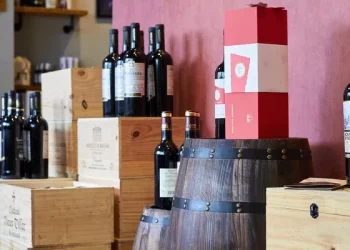Wine is a delicious alcoholic beverage that is enjoyed by millions of people around the world. It is made through a process of fermentation, in which the natural sugars in grapes are converted into alcohol. While the process of making wine can vary depending on the type of wine being produced, the following is a general guide to making wine at home.
Step 1: Select your grapes
The first step in making wine is to select your grapes. The quality of your wine will depend on the quality of your grapes, so it is important to choose grapes that are fresh, ripe, and free from mold or damage. You can either purchase grapes from a local vineyard or grow your own.
Step 2: Crush the grapes
Once you have your grapes, it’s time to crush them. This can be done either by hand or using a mechanical press. The goal is to extract as much juice from the grapes as possible.
Step 3: Add yeast
Once the grapes have been crushed, it’s time to add yeast. Yeast is what converts the natural sugars in the grapes into alcohol. You can purchase wine yeast at a homebrew supply store or online. Follow the instructions on the package to add the appropriate amount of yeast to your juice.
Step 4: Fermentation
The next step is fermentation. You will need to transfer your juice and yeast mixture into a container, such as a glass carboy or a plastic bucket. The container should be sanitized to prevent any bacteria from contaminating the wine. Cover the container with a fermentation lock, which allows carbon dioxide to escape while preventing air and bacteria from getting in.
The fermentation process can take anywhere from a few days to a few weeks, depending on the temperature and other factors. During this time, the yeast will convert the natural sugars in the grapes into alcohol.
Step 5: Transfer and Age
Once fermentation is complete, it’s time to transfer the wine to another container for aging. This is typically done using a siphon to avoid disturbing the sediment that has settled at the bottom of the container. The wine should be stored in a cool, dark place to age for several months to several years, depending on the type of wine being produced.
Step 6: Bottling
When the wine has aged to your desired level, it’s time to bottle it. You will need to sanitize your bottles and corks to prevent contamination. Use a siphon to transfer the wine into the bottles, leaving about an inch of space at the top. Insert the corks and store the bottles on their sides to keep the corks moist.
In conclusion, making wine can be a fun and rewarding hobby. While the process can vary depending on the type of wine being produced, the general steps involve selecting and crushing grapes, adding yeast, fermentation, aging, and bottling. With the right equipment and ingredients, anyone can make delicious wine at home.












































